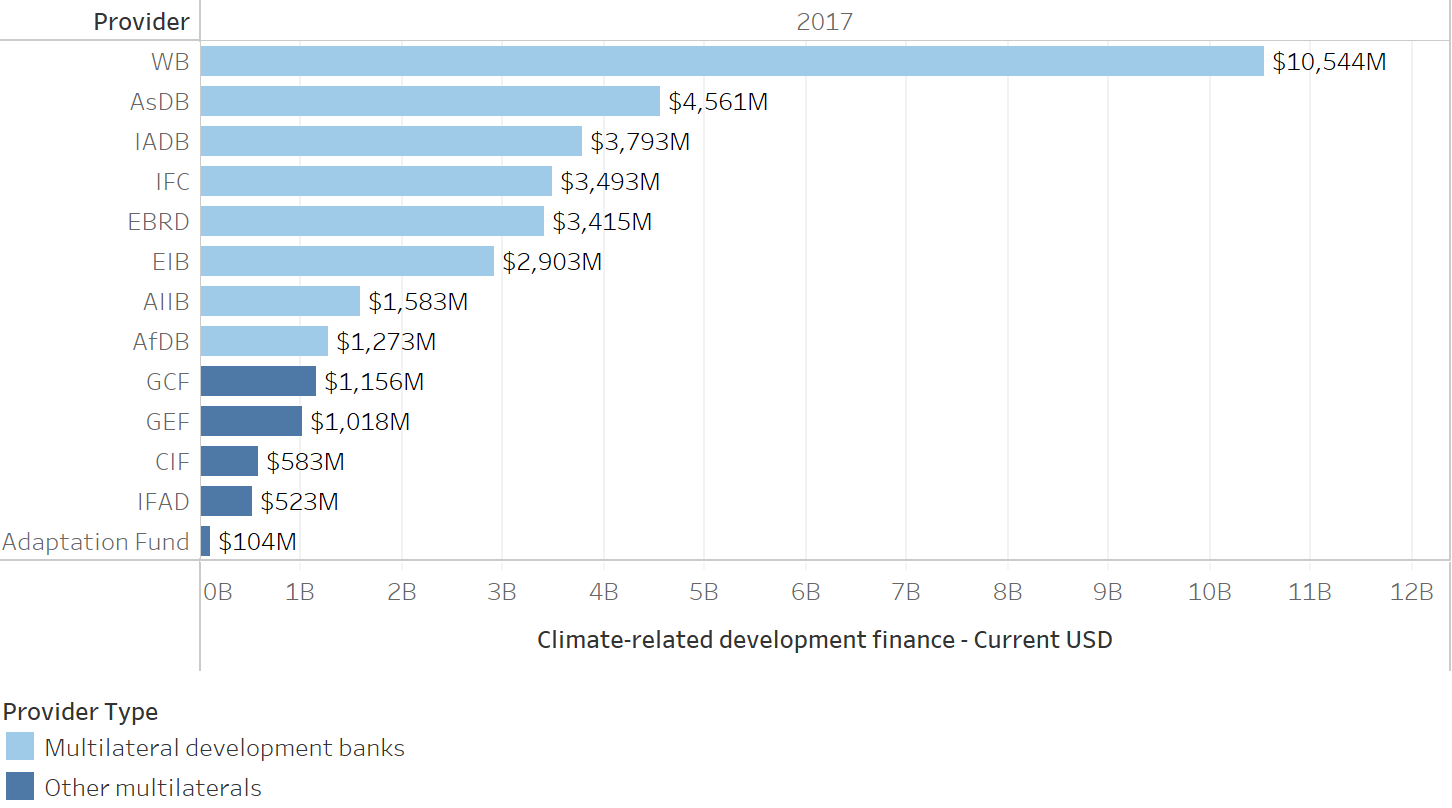
by Lance Hadley and Aniket Bhushan
Updated: September 26, 2019
In 2015, climate action in developing countries was announced as a key priority in the lead up to COP21. At that time, Canada committed $2.65 billion over five years towards the sector. This was announced as a “doubling” of previous commitment levels ($1.2 billion from 2010 to 2013, under the “Fast-Start” initiative). In addition, Canada also appointed an Ambassador for Climate Change mandated to promote Canada’s clean growth and climate change priorities internationally.
This analysis complements our analysis of climate-friendly export competitiveness, and raises the following questions:
- How does Canada support global climate-related development finance?
- What are the gaps in Canada’s global climate-related development finance strategy?
- How should Canada’s support for global climate-related development finance evolve?
How does Canada support global climate-related development finance?
Global climate finance is growing rapidly and is estimated at over $500 billion (2017). Climate-related development finance, aimed developing and emerging economies, is a key subset of this and is estimated at $67 billion (2017). Donors have collectively committed to mobilize $100 billion annually towards climate action in developing countries.
Canada has been a key champion of this commitment. In the lead up to COP21 Canada (like many other donors) increased its commitment levels, from the prior Fast-Start level of $1.2 billion to $2.65 billion. However, contrary to official claims, this is not a “doubling”. The previous commitment averaged $400 million annually over 3 years, while the current commitment (2015-2020) is expected to average $530 million annually, but over 5 years. While Canada’s global climate action spending has increased, we do not expect it to double.
Between 2015 and 2017 Canada disbursed approx. $2 billion in climate-related development finance. The largest of these investments were channeled via:
- World Bank (IDA): $195 million
- IFC (Canadian Blended Finance Facility): $ 193 million
- Green Climate Fund: $127 million
- IFC (African Renewable Energy Initiative): $113 million
- Global Environment Facility: $83 million
As compared to peers, Canada is an outlier when it comes to the balance between the use of multilateral and bilateral channels to support climate action. According to our analysis (and in contrast to the OECD’s methodology), in 2017, approx. 91% of Canada’s investments were multilateral. This makes Canada’s strategy very lopsided and one that misses important opportunities to engage Canadians domestically on support for climate action in developing countries.
What are the gaps in Canada’s global climate finance strategy?
In 2017 Canada ranked 11th among major bilateral climate donors. The list is led by Japan, Germany, France and the UK. There are several important differences between Canada and leading climate donors:
- Leading global climate donors are not only much larger than Canada in terms of the support they provide, but climate ODA also makes up a larger share of their total ODA than it does for Canada
- Most leading climate donors strike a more even balance between the use of multilateral and bilateral channels, if anything they overweight the latter (unlike Canada)
- Most leading climate donors make a conscious effort (i.e. have explicit strategies) to engage and leverage their domestic private sectors as well as civil society, in support of global climate action
How should Canada’s support for global climate finance evolve?
Canada’s current $2.65 billion global climate finance commitment ends in 2020. The next iteration of Canadian climate finance – given what we know about the plans and needs of multilateral climate institutions, costs of adaptation and mitigation investments, increasing frequency of climate emergencies and urgency of investing in resilience – will most certainly be a larger amount whichever the political party in power. The question is higher by how much, and, unless the overall international assistance envelope grows commensurately, higher at the expense of what.
Political leaders and policymakers should work towards a consensus:
Canada’s commitment to global climate action will need to grow, and that growth is best achieved within an overall increasing budget and not at the expense of investments in other critical areas.
Furthermore, the inadequacy of domestic engagement on Canada’s support for climate action in developing countries should be recognized and addressed. The following steps could prove useful:
- Strike a better balance between the use of multilateral and bilateral channels
- Enhance in-house capacity to undertake bilateral investments
- Engage the Canadian private sector via a specific window aimed at co-developing projects that support climate action in developing countries by leveraging Canadian expertise
- Incentivize linkages across Canadian civil society, academia, research institutions, and thought leaders, in support of global climate action
Total climate-related ODA provided in 2017 and climate related ODA as a % of total ODA
| Rank | Country | Climate ODA | % of ODA |
| 1 | Japan | $8.3 billion | 36% |
| 2 | Germany | $7.1 billion | 23% |
| 3 | France | $5.0 billion | 30% |
| 4 | UK | $2.3 billion | 18% |
| 5 | US | $2.2 billion | 6% |
| 6 | Norway | $936 million | 21% |
| 7 | Netherlands | $784 million | 17% |
| 8 | Sweden | $686 million | 13% |
| 11 | Canada | $531 million | 12% |







Recent Comments